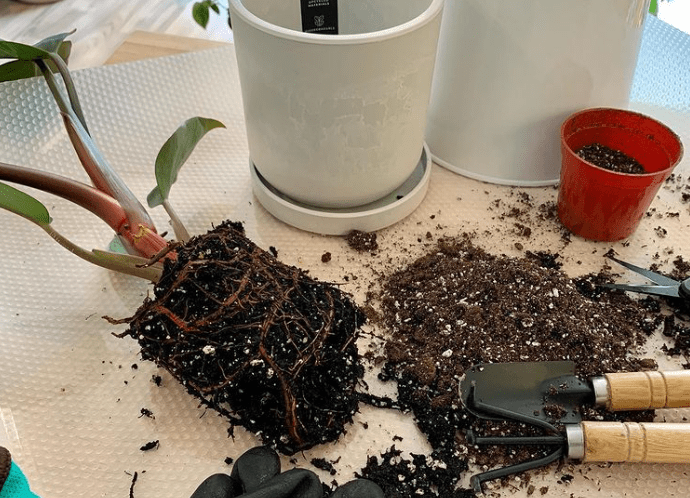
Repotting plants: Indoor plants can spend several months and sometimes even years in the same pot, however, over time their roots take over all available space. The substrate which has the role of retaining water and nutrients then becomes almost non-existent. If you notice a slowdown in growth in your plant, if its roots protrude above the soil or through the holes in the pot, repotting will be an essential operation in this case. The ideal is to wait until spring to start, before the resumption of root activity.
Repotting meaning
Repotting plants is putting them in a new pot. It helps ensure your plants have enough space in the soil for the roots to grow. However, repotting does not necessarily mean changing a plant’s current planter, but rather, changing its soil or potting mix. Fresh soil means new nutrients and healthy plants.
Indoor plants are especially repotted, but all potted plants, shrubs and fruit trees grown in tubs deserve regular repotting.
When to repot your indoor plants?
The ideal time to repot indoor plants is at the beginning of the annual vegetative period, in early spring, as soon as new growth appears. Avoid repotting during the rest period, which is from October to January for most plants. Another tip to know when to repot a plant is when the roots are sticking out of the drainage holes, when the foliage seems enormous compared to the pot or when the new leaves are smaller.
Do not repot a flowering plant.
A simple test is to be done to find out if the roots of your plant lack space:
- Stop watering the plant a few days before, it will detach more easily from the pot.
- Grasp the base of the stems.
- Turn the jar upside down and tap the bottom to help unload.
- Observe the roots, if they come out in large numbers from the soil, you need to repot.
Newly purchased plants should also be repotted, as they have usually reached the maximum size for the pots in which they are sold.
How to repot your indoor plants?
If you want to know how to repot plants, follow these step-by-steps tips.
Prepare the potting material
- Prepare all the necessary equipment and place it next to you:
- the plant to be repotted
- the new jar
- gravel for drainage
- all the elements necessary for the preparation of the potting soil (according to the needs of the plant)
- a watering can
- a transplanter
Start repotting the houseplant
- Unpot the plant by taping the bottom of the pot then lay it down. Afterwards, hold the base of the stems in one hand and gently pull the pot out with the other. Tap again if the root ball resists. If roots come out of the drainage holes, it may be necessary to cut the pot with a cutter.
- Take a pot with a slightly larger diameter than the old one (2 to 4 cm maximum)
- Ideal but not mandatory: Line the bottom with a draining layer of gravel or expanded clay balls to prevent the roots from blocking the drainage hole necessary for the flow of water and to avoid disasters during watering
- Put a few centimeters of fresh potting soil at the bottom of the new pot and pack it down, removing any air pockets. Choose the suitable soil for the plants you are potting
- Tamp lightly then water during the following weeks according to the needs of the plant
- Prepare your house plant by removing dead, damaged and fragile roots with a sharp pruner
- Place the plant vertically in the center of the planter
- Fill the planter with the potting soil around the plant until it is secure. Be sure not to pack too much soil into the planter, as you want the roots to breathe.
- Tamp lightly then water during the following weeks according to the needs of the plant
What to do for big plants?
Some plants are too heavy or bulky to repot. This is frequently the case with ficus and phoenix plants. Others do not need regular repotting. In this case, you have to remove a few centimeters of soil from the top of the pot and replace it with new soil. Watering will draw nutrients to the roots.
Don’t forget that repotted indoor plants do not need to be fertilized.
Did You find this helpful? Share it with your friends!